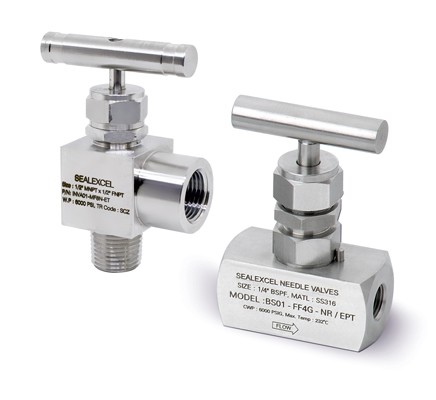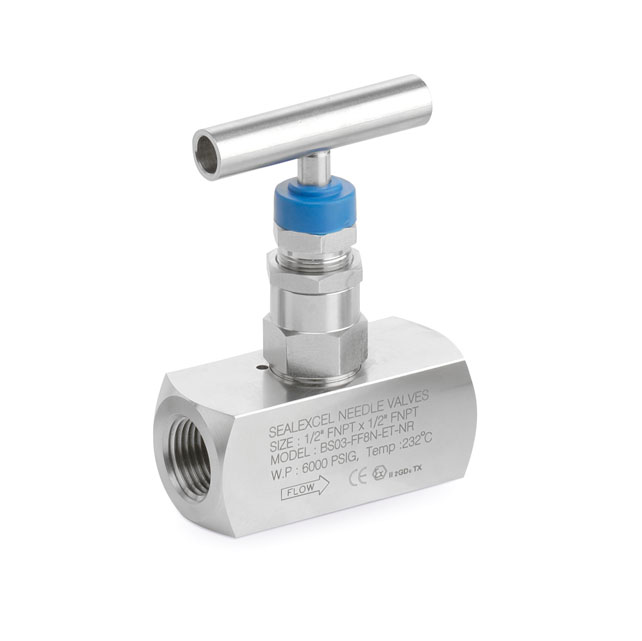Needle valves manufacturers in India, needle valve manufacturer
June 9, 2021Uses of Needle Valve in Various Pipe Fitting Industry & Its Important Functions
December 21, 2021Needle valves are made to control flow precisely, and They’re commonly employed for services like continuous blow-off or chemical feed control.
Because the stem threads are more delicate than typical, increasing or decreasing the opening through the seat necessitates a lot of handwheel movement. These valves usually have a smaller seat diameter than the pipe size.
It can control the flow rate with progressive and smooth adjustments, but it can also be used as a reliable shut-off valve. They are, however, often employed for low flow rates and have a high-pressure drop from the input to the output. The needle valve manufacturer makes them commonly at port diameters ranging from 1/8″ to 2″. The most common application, similar to a propane needle valve, is to control gas flow.
Construction and Design of Needle Valves
The valve body and seat, the stem and stem tip, and the packing and bonnet are the three major components of a needle valve assembly. Needle valves bodies are often small enough to be manufactured directly from hex or square bar stock. Z- and L-shaped flow routes across the body, referred to as globe and angle patterns, respectively, are standard configurations.
At the end of the valve stem, needle valves feature a long, tapering needle-like point. The plunger is a term used to describe this device.
The position of the plunger is also controlled by a handwheel or a small lever positioned on the plunger in these valves.
The plunger of the valve, which looks like a needle, inserts into the seat. A needle valve can precisely and reliably control the amount of fluid that travels through it due to its unique construction.
Needle valves are usually operated by hand; however, there are also automatic versions available. Needle valves give positive shut-off and can be used as shut-off valves, but if this is the only requirement and not metering, other more cost-effective valves are available. When closing a needle valve, use caution since excessive torque can harm the stem tip or seat.
How Does Needle Valve Work?
Manual or motorised needle valves are available. In manually operated needle valves, the handwheel controls the distance between the plunger and the valve seat. The plunger is lifted when the handwheel is rotated in one direction, opening the valve and allowing fluid to pass through. The plunger slides closer to the seat when the handwheel is spun opposite, reducing the flow rate or closing the valve.
Automated needle valves have a hydraulic motor or an air actuator that opens and closes the valve automatically. The motor or actuator will adjust the plunger’s position in response to timers or external performance data acquired while monitoring the machinery.
Needle valves, both manually operated and automated, provide for fine flow rate control. Because the handwheel is finely threaded, it takes several spins to alter the plunger’s position. As a result, a needle valve can assist you in adequately regulating the fluid flow rate in your system.
Where Are Needle Valves Used?
Needle valves are often employed to control flow and protect sensitive gauges from damage caused by liquid and gas pressure surges. They’re appropriate for systems with modest flow rates and lighter, less viscous materials. Needle valves are used in low-pressure hydraulic systems, chemical processing, and other gas and liquid applications.
Utilise needle valves from the best needle valves manufacturers in India like us; Seal Excel offers them various stem options for added versatility. We manufacture Stainless steel needle valves that are exceptionally chemically resistant to practically any medium. The material is extremely tough and resistant to high temperatures and pressures. It can handle corrosive and aggressive media like seawater.


